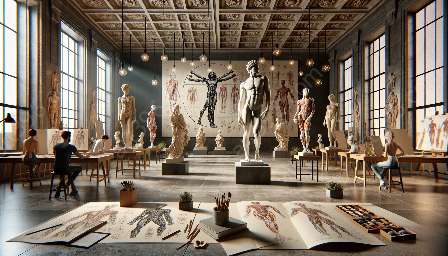Introduction
Art and science have long been interwoven, and in few areas is this more evident than in the use of animal anatomy in art. The study of animal anatomy has provided artists with invaluable insights into form, structure, and movement, enhancing their ability to create accurate and impactful representations of the natural world. Additionally, the educational benefits of understanding animal anatomy in art extend beyond the studio, contributing to a deeper appreciation and understanding of the biological world.
Understanding Artistic Anatomy
Artistic anatomy, the study of the structure and form of the human or animal body, forms the foundation of many art practices. By thoroughly comprehending the underlying anatomical structures of animals, artists gain the ability to imbue their creations with a sense of life, vitality, and authenticity. This knowledge allows for more accurate and engaging depictions of creatures, whether in lifelike sculptures, detailed illustrations, or vibrant paintings.
Scientific Insights for Artists
The study of animal anatomy provides artists with an intimate understanding of the skeletal, muscular, and organ systems that underpin the physical appearance and behavior of animals. This knowledge equips artists with the ability to accurately portray the nuances of form, movement, and expression in their works. Whether creating anatomical studies, wildlife art, or fantastical creatures, artists can leverage their understanding of animal anatomy to connect with viewers on a deeper level, evoking emotions and fostering a greater appreciation for the natural world.
Enhancing Educational Experiences
Beyond its impact on artistic creation, animal anatomy plays a crucial role in educational settings. By integrating the study of animal anatomy into art curricula, educators can offer students a multidisciplinary approach to learning. Through hands-on exploration of anatomical structures, students not only hone their artistic skills but also gain an appreciation for the biological marvels of the animal kingdom. This fusion of art and science creates a rich learning environment that fosters creativity, critical thinking, and a holistic understanding of the natural world.
Interdisciplinary Collaborations
The intersection of animal anatomy, art, and science has paved the way for exciting collaborative endeavors. Artists and scientists frequently join forces to explore and communicate complex scientific concepts through visually stunning and scientifically accurate representations. These collaborations yield a wealth of educational resources, such as anatomical illustrations, interactive educational materials, and immersive exhibitions that bridge the gap between art and science, enriching the experiences of viewers and learners alike.
Conclusion
The utilization of animal anatomy in art transcends the confines of the studio, impacting both artistic expression and educational experiences. By delving into the intricacies of animal anatomy, artists gain profound insights that elevate their creative endeavors, while educators offer students a holistic approach to learning that fosters a deep appreciation for the natural world. This harmonious convergence of art and science not only enriches the artistic and educational landscapes but also cultivates a greater understanding and reverence for the wondrous creatures that inhabit our world.

